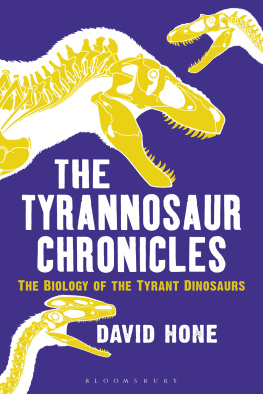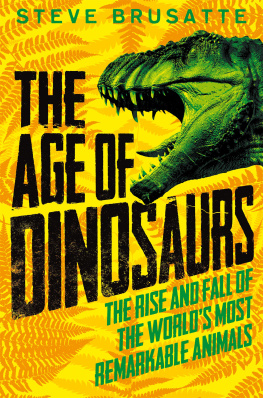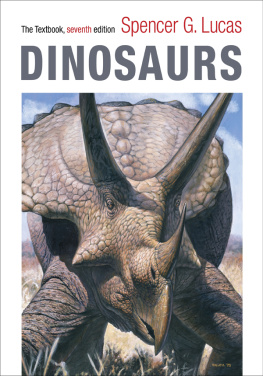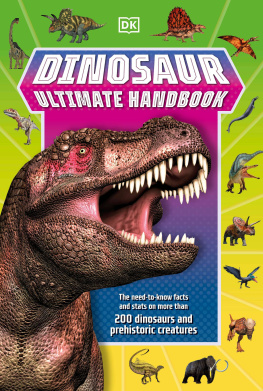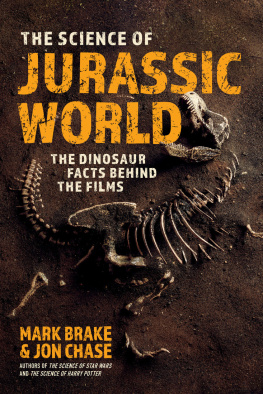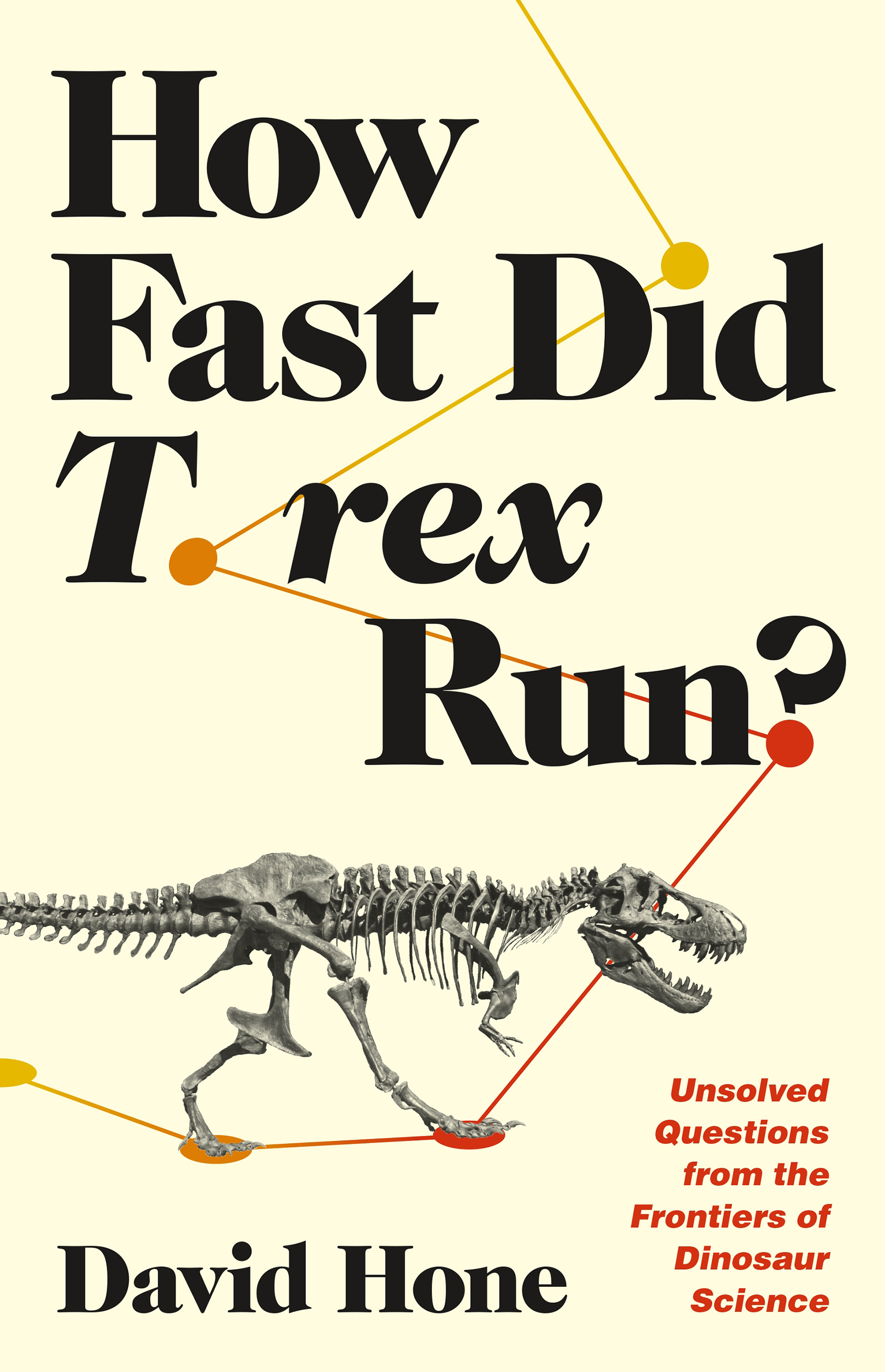How Fast Did T. rex Run?
How Fast Did T. rex Run?
Unsolved Questions from the Frontiers of Dinosaur Science
DAVID HONE
Princeton University Press
Princeton and Oxford
Published in the United States, Canada, and the Philippines by
Princeton University Press
41 William Street, Princeton, New Jersey 08540
press.princeton.edu
First published in Great Britain in 2022 as The Future of Dinosaurs by Hodder & Stoughton A Hachette UK company
Copyright 2022 by David Hone
The right of David Hone to be identified as the Author of the Work has been asserted by him in accordance with the Copyright, Designs and Patents Act 1988.
All rights reserved.
Princeton University Press is committed to the protection of copyright and the intellectual property our authors entrust to us. Copyright promotes the progress and integrity of knowledge. Thank you for supporting free speech and the global exchange of ideas by purchasing an authorized edition of this book. If you wish to reproduce or distribute any part of it in any form, please obtain permission.
Requests for permission to reproduce material from this work should be sent to
ISBN 978-0-691-24251-4
ISBN (e-book) 978-0-691-24252-1
Library of Congress Control Number 2022930988
Version 1.0
Typeset in Bembo by Hewer Text UK Ltd, Edinburgh
Jacket art: T. rex skeleton photograph by Eirik Newth; Triceratops skeleton photograph by Eva Krcher; Velociraptor skeleton photograph by Eduard Sol Vzquez
Cover design by Karl Spurzem
For Christine
Not forgotten
Contents
- ix
- xi
- 1
- 11
- 23
- 39
- 55
- 73
- 87
- 97
- 109
- 123
- 135
- 149
- 163
- 175
- 189
- 203
- 211
- 223
- 239
- 241
Acknowledgements
Special thanks to Jordan Mallon for reading the whole damned thing and making suggestions and comments on the content, at least one of which I actually followed and changed.
Also thanks to Sarah Labelle, Marissa Livius, Bryan Moore, Mathew Roloson and for discussion and feedback on the book.
Numerous colleagues helped me to obtain photos or provided them for this book and so I also thank Caleb Brown, Sara Burch, Andrea Cau, Julia Clarke, Mick Ellison, David Evans, Peter Falkingham, Pascal Godefroit, Scott Hartman, Donald Henderson, Thierry Hubin, ReBecca Hunt-Foster, Evan Johnson-Ransom, Martin Kundrt, Hans Larsson, Xing Lida, Jordan Mallon, Maria McNamara, Alejandro Otero, Diego Pol, Eric Snively, Larry Witmer, Xu Xing and Matt Zeher.
I also need to thank my agent Max Edwards, and Huw Armstrong, Maddie Price and Barry Johnston at Hodder for shepherding this work from an original idea into its final form.
Preface
C ONSIDER THE TYRANNOSAURUSrex. This most iconic of dinosaurs is the superstar of movies, features in endless documentaries and appears in every popular book of dinosaurs (generally on the cover) that one could imagine. In your minds eye, Im sure theres already a clear picture of this incredible animal and if you know a bit about it, you probably have some details down about it, too. You may perhaps have an idea of its length, weight, height, number of teeth or top speed; if you are particularly keen, you may know of its bite power, skin texture, habitat, favoured prey species, and more.
Much of this, you may imagine, is based on some rigorous science and fossil data, or at least as rigorous as it can be, given that the last Tyrannosaurus died in the great mass extinction of the dinosaurs some 65 or so million years ago. Hundreds of papers in the scientific literature have described the sizes and shapes of bones, reconstructed the cartilage of the joints, worked out which muscles would attach where on the skeleton, identified patches of fossil skin, looked at footprints and bite marks on bones, calculated mass estimates and walking speeds, and more. We can put together a remarkably detailed picture of this animal.
More than that, in fact, we can delve into some incredible features of which even fans of dinosaurs would likely be unaware. We can look inside the skulls of Tyrannosaurus specimens to see how large the various parts of their brains were, and we can get an estimate of their range of hearing from the structure of the inner ear. There have been studies looking at pupil shape of the eyes, nocturnal versus diurnal habits, growth rate, the sex of individual animals, and how far on average they would have to travel to find food when scavenging.
Putting all of this together gives us an unparalleled picture of an animal that has been extinct for a million human lifetimes. We know more about Tyrannosaurus than perhaps any other extinct dinosaur, but we have only around twenty-five good skeletons to work from, and this creature is just one of some 1,500 or so dinosaur species currently known to science.
Even for the things we do know, we cant compare many of these facts to other species that the Tyrannosaurus lived alongside, or that came before it. Yes, its amazing to have good estimates of the speed of this huge carnivore, but it is also frustrating to be unable to answer questions such as could it catch Triceratops? when we dont know how fast they were. Furthermore, our knowledge of rexy is still full of huge holes we dont know what colour it was or what its eggs or nests looked like. We dont know if it lived in groups, if it mated for life, if it preferred forests or open environments, or if it migrated in winter. For all our technological advances, and two centuries of new data and ideas, we still know less than the basic ecologies of living beings: what parasites and diseases afflicted them, how they communicated, if they ever took fish as prey, what their internal organs were like, or even what their tiny arms were used for.
Whenever I do some kind of outreach or public engagement with science, I encounter things about dinosaurs that the public are absolutely amazed to learn scientists know with certainty, and also things they assume would be easy to work out, for which we have no real idea of the answer. Its a curious quirk that there is such a disparity between what palaeontologists do know and what many people think we know. This book is, therefore, ultimately about what we dont know about dinosaurs.
There are major gaps in our knowledge, but extraordinary advances in palaeontological methods and ever more dinosaur fossils promise a landslide of new data and huge leaps forward in our understanding of these incredible creatures. There are a great many issues that we are currently unable to resolve, but we have tantalising hints that we may soon be able to answer them. This book aims to bridge the gap between what we do know and what gaps there are in our understanding, but also to examine just how we are likely to fill them in the future.
Ongoing research trends, as yet undescribed specimens and still-developing techniques mean we can plot a route to the next generation of knowledge of dinosaur biology. We will make mistakes in the future, and have doubtless made some in the past that have yet to be corrected, but the inexorable progress of scientific discovery will doubtless improve on what we have now.
We know enough to spot some key gaps and have the fossils to try and fill them, but there will be exciting discoveries and some most unexpected results on the way. Based on the last two centuries of dinosaurian research, that much is certain. There are also gaps that may never be filled, or, perhaps worse, we may be able to tentatively fill them, but not know if our calculated answers are correct. We have probably learned more about dinosaurs in the last twenty years than in the previous two hundred, and are poised to take many more steps forwards in the coming decade. This book will address the recent strides made and the advanced knowledge we have of these astonishing creatures, as well as what we hope to learn in the future about these most fascinating of extinct animals.



